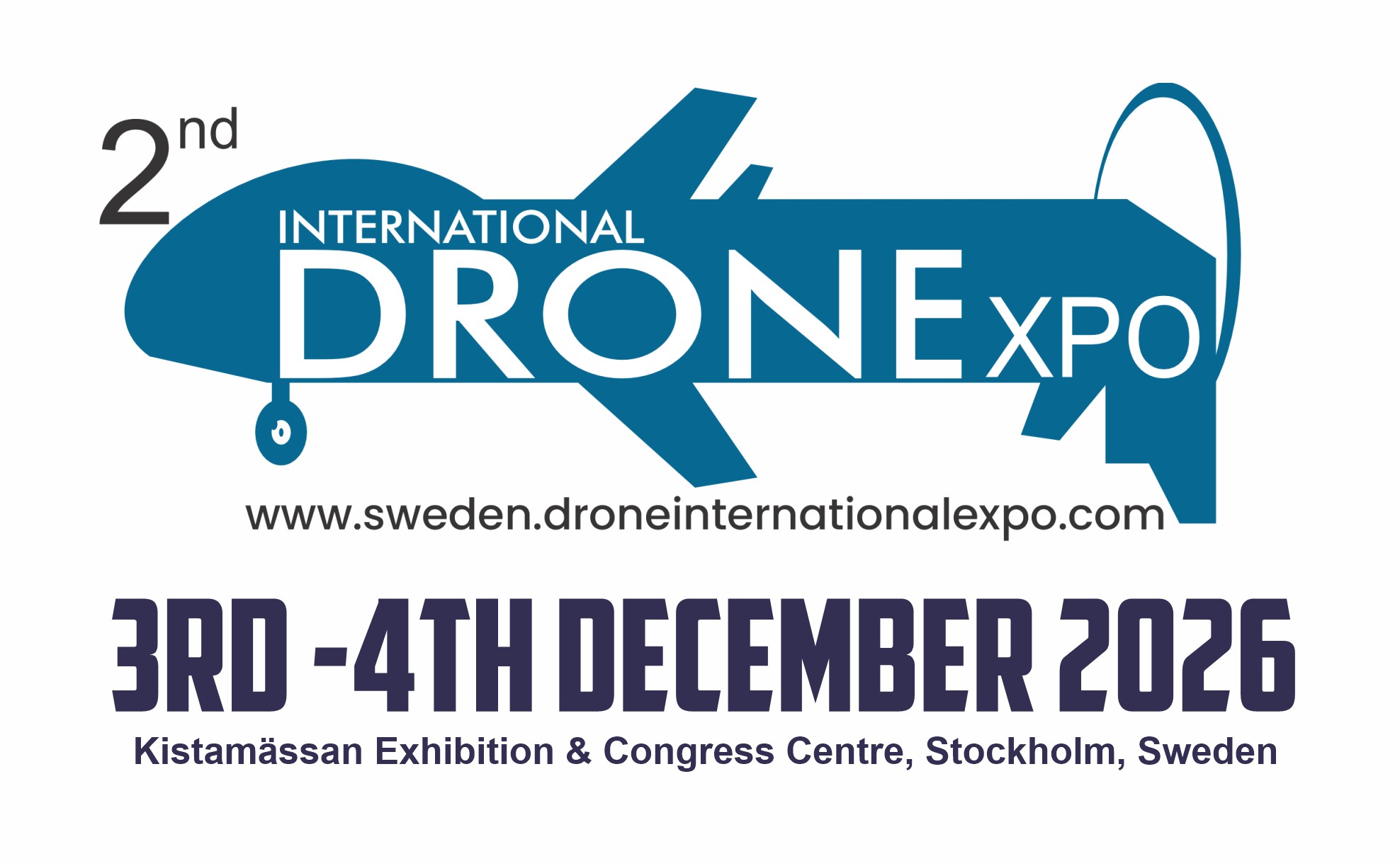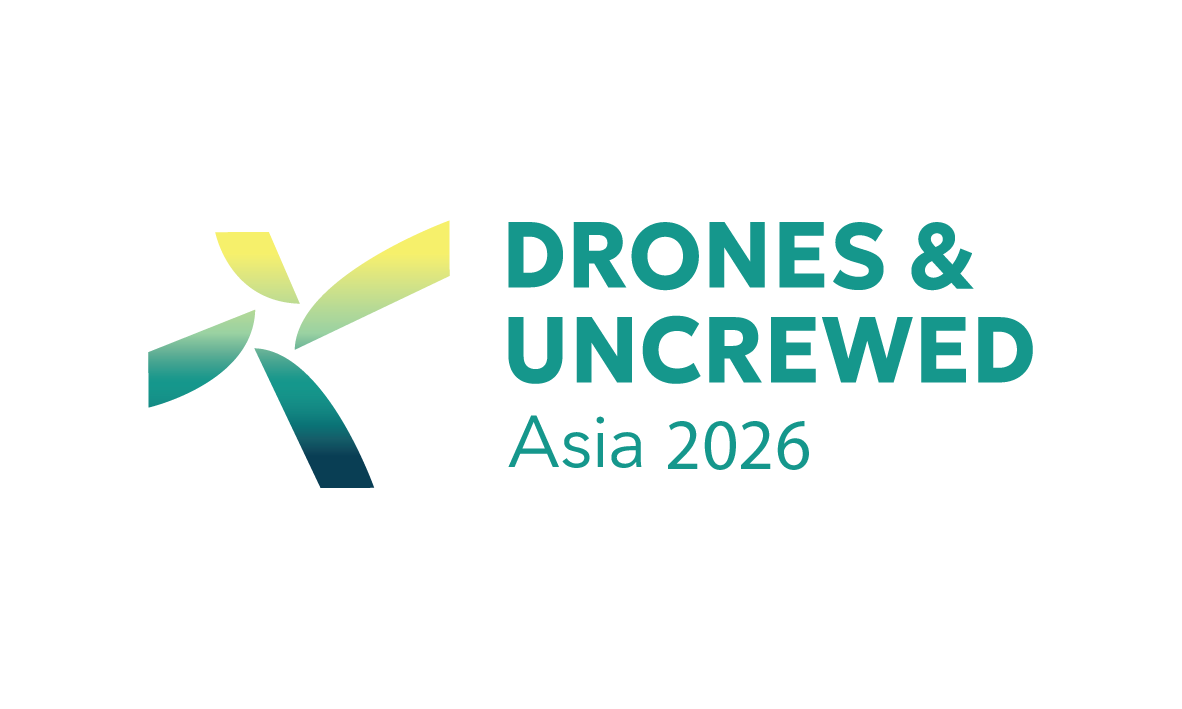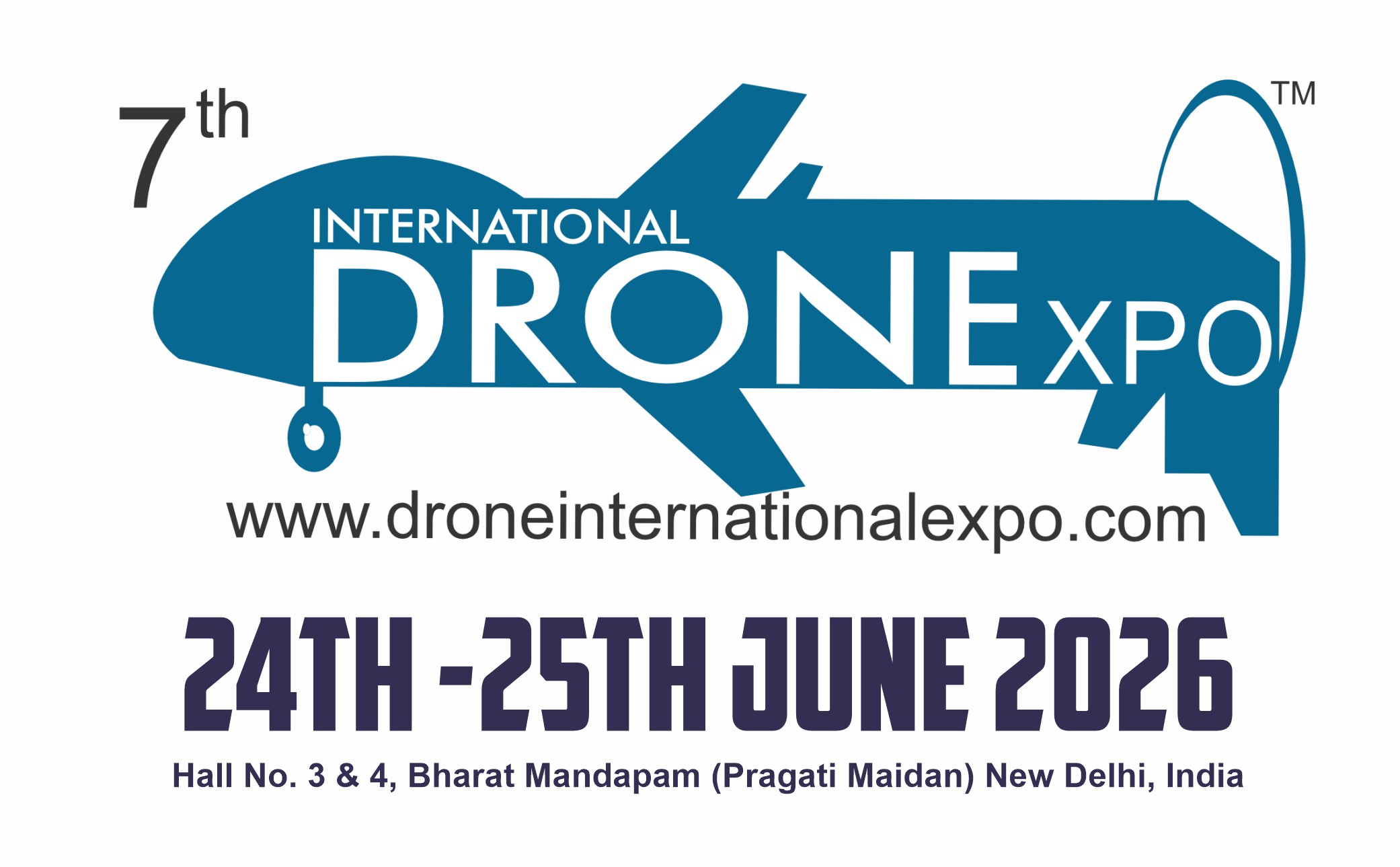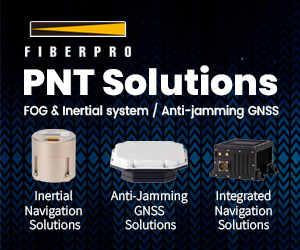5G networks
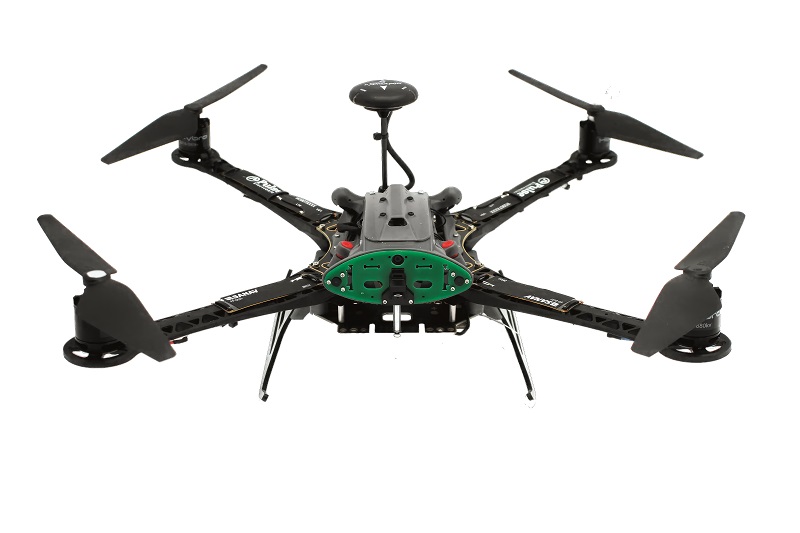
Fifth dimension
5G technology is moving beyond consumer smartphones and into uncrewed systems. Nick Flaherty looks at some of the latest developments.
While 5G phones are now widely available, and network operators are rolling out commercial 5G networks in urban areas around the world, the technology is also being developed with uncrewed systems in mind. The standards body, 3GPP, has been adding specifications specifically to help with the operation of UAVs, driverless cars, industrial automated guided vehicles (AGVs) and even uncrewed shipping.
One of the key advantages of the latest standards (see sidebar: 3GPP Releases) is to allow companies to set up their own networks, called 5G New Radio standalone, or NR SA (see sidebar: 5G New Radio). The NR SA specification takes advantage of the lower latency of 5G packets to improve the controllability of uncrewed systems by feeding back video, whether they are on a factory floor or a farm.
The latest versions of 5G also open up new options for frequency bands and antenna designs. MIMO (multiple in, multiple out) antennas specified in the latest releases provide more robust, higher bandwidth data links for platforms such as driverless cars, allowing them to tap into existing 5G infrastructure with vehicle-to-everything (5G-V2X) protocols and even act as base stations themselves.
The addition of millimetre-wave frequency bands at around 70 GHz provides options for high-bandwidth backhaul with speeds of gigabits per second, opening up applications in aerial base stations.
However, the hardware such as chips are designed for the consumer market and mainstream 5G network providers, so developing 5G systems for uncrewed applications remains a challenge.
5G in the air
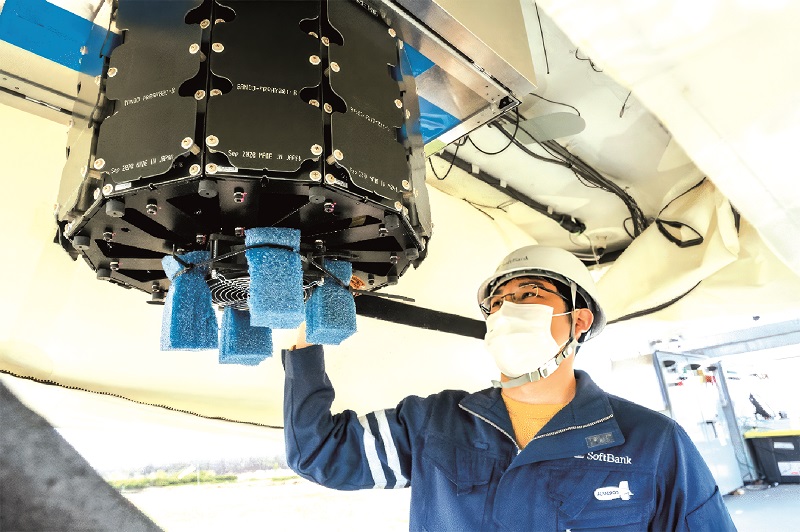
There are many ways that 5G is being used in the air, from aerial base stations to satellite connections and UAV-to-UAV connections for swarming algorithms.
A UAV is being tested in the Snowdonia National Park, in Wales, that can increase safety for the millions of visitors to the area each year using 5G. Research has found that 35% of visitors to the UK’s national parks are worried about getting lost on a walking or hiking holiday, while 31% fear being unable to contact anyone. Mountain rescue teams in England and Wales responded to a record 3629 call-outs in 2021, up 40% from pre-pandemic levels, with many more visitors to national parks that do not have cellular coverage.
That is driving the demand for airborne base stations using 5G to provide high-bandwidth services such as video. However, this needs a combination of lightweight 5G base station technology and local aircraft traffic management.
In Snowdonia, a Dragon UAV has been converted to carry an airborne detect-and-avoid radar, electronic identification and a positioning system that links to a UAV traffic management (UTM) system.
The plan is to test the use of the UAV’s base station payload to pick up phone signals on the ground. The system can relay location data from the phones back to base using a 5G NR SA network. The Dragon can be launched to find walkers and provide first responders with essential access information.
The trials are exploring how connectivity can provide key support to emergency services so they can respond more quickly. Having a base station in the sky will allow mountain rescue teams to use more than just voice calls, enabling picture sharing and video calling that could even help the teams guide people back to safety without having to send them out, saving the teams valuable time and resources.
The Dragon can accommodate 5 kg of payload for the base station, either in the nose or a ventral pod for experimental purposes. Its maximum take-off weight is 55 kg, and the endurance for rescue activities will be 2 to 4 hours depending on payload.
This 5G data can be used with other delivery services. For example, a recent project in Snowdonia also showed proof-of-concept for delivering a mini-defibrillator via the Dragon to a remote or rural location that would be difficult to reach with an ambulance in a timely fashion.
High-altitude base stations
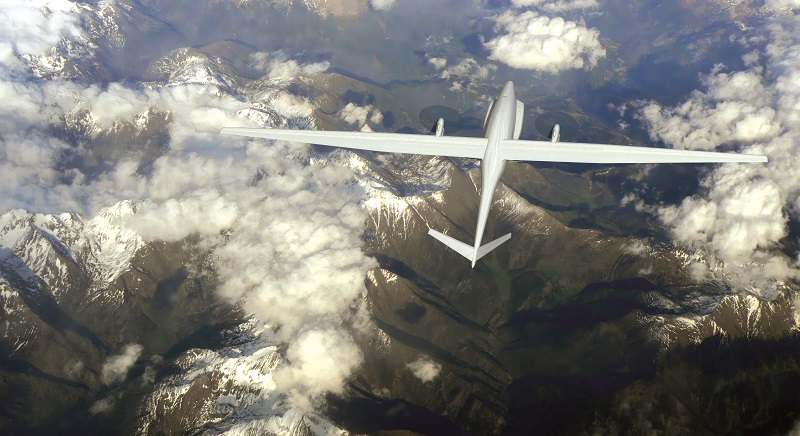
Another important application for 5G with UAVs is as high-altitude base stations. Flying at altitudes above 18 km (60,000 ft), the UAVs can provide a base station to cover a wide area over days or even months. Applications here include disaster relief operations or to bring 5G broadband to remote areas.
The key is developing a low-power base station capability with highly sensitive antenna technology. A radio wave propagation simulator for stratosphere-level wireless comms systems is used to estimate radio wave interference at high altitudes, and enable the design of network area coverage and antenna systems for the UAVs.
The base station technology is being tested using high-altitude tethered balloons at a spaceport in a remote part of Japan. A cylindrical multi-element phased array antenna is used to provide stable connectivity regardless of airborne motion, and is being tested on a high-altitude balloon that can carry a payload of 60 kg.
One challenge is that the comms area, or footprint, cannot be fixed, because cells rotate as the aircraft turns, which in turn causes frequent handovers and affects reception strength levels, thereby impacting telecoms quality. By using a cylindrical antenna with digital beamforming control though, the footprint can be fixed by controlling the direction of radio beams as the airborne vehicle rotates.

The balloon uses an autopilot system with three tethers and machine learning (ML) to provide stable positioning. At an altitude of 249 m, the system provides wide-area network coverage of a few tens of kilometres and stable connection to phones on the ground even when the altitude, pitch and yaw of the balloon changes. Even with changes in wind speed and direction, there have been no handovers for mobile devices, and signal reception levels have remained unchanged.
The results are being applied to uncrewed aircraft to provide 5G coverage on the ground. UAVs are being developed that use solar power or even hydrogen fuel cells to provide long-term availability in the air.
The 5G NR SA network has been tested in the air at an altitude of 14 km, delivering video calls on the 2.1 GHz band with download speeds of 90 Mbit/s and upload speeds of 23 Mbit/s over a 10 MHz bandwidth across an area of 450 km2.
The network linked a three-way video call between the land-based test site, a mobile device operated from a boat and a control site 950 km away. Further land and heliborne tests demonstrated a user could stream 4K video to a mobile phone with an average latency of 1 ms above network speed. Signal strength trials, using a 5G-enabled device moving at 100 kph, proved full interoperability with ground-based masts.
A fuel cell to power the UAV and the base station has been tested on the ground and provides 290 kW of power, with 20 kW for the base station. The key is a 9 m2 digital steerable phased array antenna with 2048 dual polarisation phased array transceivers. This is equivalent to about 500 terrestrial antennas, and provides a 5G latency of around 1 ms.
The phased array antenna uses beam steering to provide a configurable cell 100 km in diameter that can target areas of low coverage, such as radio ‘shadows’ that are created by hills or other geographical features. That helps provide more consistent network coverage.
Smaller UAVs
For smaller UAVs, the hardware design for their comms is a trade-off between several interrelated aspects and is typically governed by the size, weight and power, instantaneous bandwidth, range and link reliability.
The design of the antenna systems can offer several advantages for 5G operation. For example, exploiting diversity over multiple antennas with a MIMO design mitigates the impact of fading and thus improves link reliability, but at the expense of the size and weight, so the design is used for the ground station receiver.
A more advanced example is to form steerable beams using antenna arrays, which results in a higher antenna gain along the steering direction compared to an omnidirectional antenna. Furthermore, steerable beams at the transmitter and receiver ends reduce the probability of radio activity being detected and jammed.
However, these antenna designs also introduce system-level challenges such as antenna-array calibration or the need for location and attitude information required for beam steering.
Software-defined 5G systems can be adapted to improve the beam steering algorithms over time, reducing the power consumption or increasing the sensitivity to boost the range or mission time.
Small UAVs can also be used for monitoring the quality of a 5G network. One example uses mobile network testing scanners and Android smartphones mounted on a UAV to execute automatic tests. This combination provides key 5G NR coverage metrics such as reference signal received power and signal-to-interference-plus-noise ratio (SINR) in accordance with 3GPP standards.
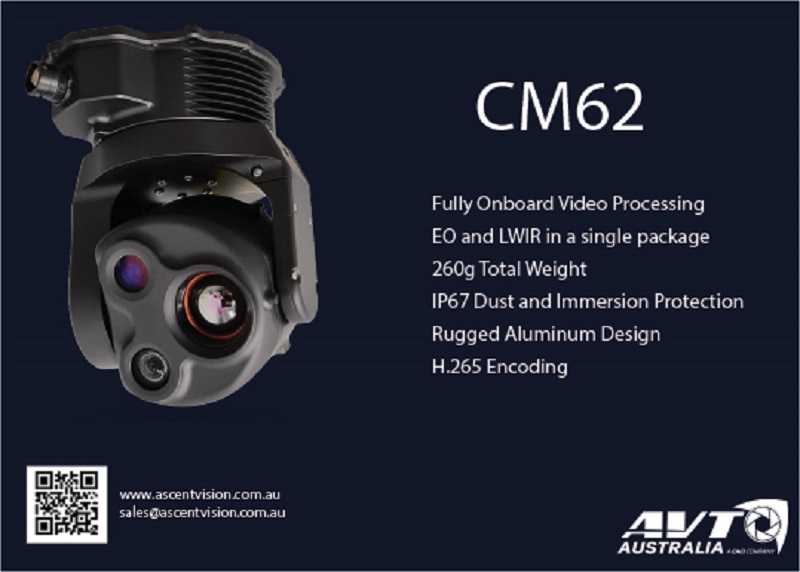
The monitoring software is now being ported to the 5G chipset in the UAV to eliminate the need for a smartphone.
5G satellites
A possible approach to integrating UAVs into 5G systems via BVLOS links using LEO satellites is the concept of 5G relay nodes (RNs). A low-complexity satellite-enabled RN on a UAV transports the 5G downlink/uplink waveform via a LEO link to the actual base station, called the donor NodeB at the ground station.
This RN appears like a ground station and, when flying in a swarm, the UAV with the satellite-enabled RN can act as a base station for the fleet; the donor NodeB simply sees a number of users. This approach requires less comms infrastructure, both onboard the UAV and at the ground station, and simplifies the handover from 5G to satellite.
UAV 5G reference design
The latest chipset provides lightweight support for 5G connectivity for low-latency, high-bandwidth data transfer with wi-fi 6 for UAV-to-UAV and swarm support.
The chipset also includes an ML engine with a performance of 15 TOPS to run deep learning workloads for autonomous flying as well as integration with the UTM and an UTM service supplier (USS).
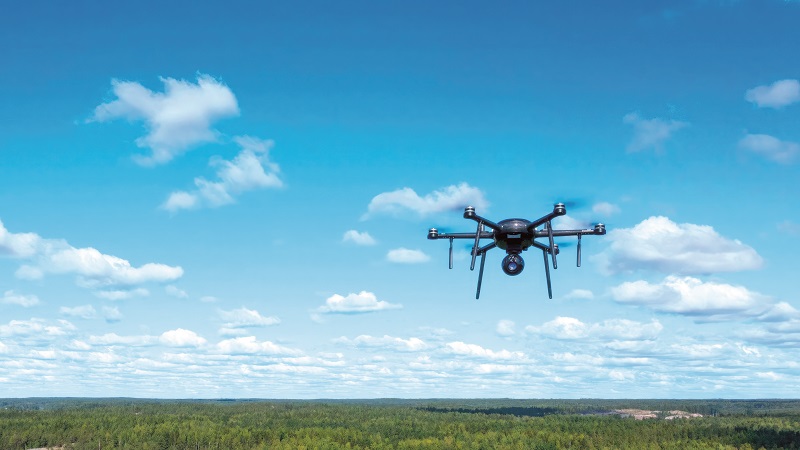
The chipset has been integrated with a PX4 real-time flight controller, inertial measurement unit and barometer to provide a 5G autopilot that weighs just 16 g. The wireless modem in the chipset currently supports Release 16 of the 3GPP specifications supporting every commercial 5G band from 600 MHz to 41 GHz.
ML is used to optimise sub-6 GHz and millimetre-wave links for improved speeds, coverage, mobility and link robustness, while power-saving algorithms optimise the use of multiple antennas to extend battery life.
Uncrewed shipping
5G is also being tested for controlling uncrewed ships remotely as they approach port.
The world’s first 5G marine-focused testbed is the Smart Sound Connect Marine 5G Mobile Private Network deployed at Plymouth, on England’s south coast (see UST 47, December 2022/January 2023). It uses a 5G mesh network with relays on solar-powered buoys out at sea to provide 5G signals up to 20 miles offshore.
Its uses live data from Smart Sound Connect on a digital twin platform to test autonomous ships for a certification and classification programme. The network is also being used to relay data back from sonar systems under the buoys to test UUVs.

On the ground
5G networks rolling out for consumer applications also opens up opportunities for driverless cars. Vehicle-to-everything (V2X) chipsets are now supporting 5G networks in two ways.

The Day 1 version of 5G-V2X offers life-saving situational awareness alerts, with the 5G network relaying data on the local situation to a vehicle. It is now being designed into passenger cars to give advance warning of hazards.
Day 2 5G-V2X applications can use sensor data shared by other vehicles, and enable critical actions such as automatic braking. First samples are expected to be available this year.
The new chipsets are designed to support all upcoming V2X requirements in dedicated short-range comms (DSRC) and C-V2X comms technologies, including the latest 5G-V2X (C-V2X Release 16/17/18) and IEEE 802.11bd next-generation DSRC.
The chipsets concurrently support full backwards compatibility to any Day 1 vehicle, where each vehicle reports its own data using DSRC or LTE-V2X (C-V2X Release 14), with any Day 2 technology, where the vehicle also reports all the information detected by its sensors. Both radios use two antennas with full transmit and receive diversity.
The chipsets will embed ultra-low-latency V2X hardware security modules and hardware acceleration of line-rate security verification. However, they need more infrastructure on the ground to be effective. While 5G is rolling out in major cities, it is not available in many towns or the countryside, limiting the effectiveness for driverless cars and buses.
Installing base stations can be costly, mainly because they need a fibre optic connection. However, millimetre-wave frequencies above 70 GHz can provide 5G-standard gigabit links to roadside base stations implemented as small cells on lamp posts or even to individual sensor units. This brings down the cost of the volume roll-out of V2X infrastructure.
The same 5G infrastructure can be used for remote control of a driverless vehicle if it does not have a steering wheel. In the unlikely event that the vehicle has a problem it cannot resolve, a remote operator can pilot the vehicle past the problem. The low, sub-1 ms latency of 5G is for such remote operation.
Conclusion
The low latency and standardisation of 5G is driving the technology into more uncrewed applications. Standalone 5G networks are already providing high-speed video links for automated ground vehicles in factories and UAVs on farms, boosting productivity. Also, MIMO antenna support and low-latency capability is allowing remote piloting of uncrewed shipping and driverless cars in testbeds, using commercial infrastructure.

The next releases of the 3GPP 5G specifications will see even more support for UAVs at low altitudes, for applications such as mountain rescue and to coordinate swarms of aircraft. Up in the stratosphere, UAVs will operate as 5G base stations, providing comms support for disaster relief and to bring broadband data to remote areas of the world.
5G New Radio
The 5G New Radio (NR) specification was a key step forward for 5G networks. It started in 2015 with Release 15 from the 3GPP group to add dynamic spectrum sharing, and is a key capability for uncrewed aircraft and ground vehicles.
A standalone mode allows new 5G private networks to be set up independently without the need for an existing 4G/LTE infrastructure. That is particularly useful for controlling AGVs in a factory or UAVs on a farm.
5G NR uses frequency bands in two frequency ranges – range 1, for bands within the 410-7125 MHz; and range 2, for bands within 24,250 and 71,000 MHz.
5G NR SA includes a new 5G Packet Core architecture instead of relying on the 4G Evolved Packet Core. It is more cost-effective to roll out and provides higher data and energy efficiency.
Ultra-reliable low-latency comms (URLLC ) is supported as one of the use cases for NR networks for AGVs, adding logical channel prioritisation (LCP) restrictions as well as enabling packet duplication. The radio resource controller (RRC) configures the protocol layers in the network and user equipment (UE).
For instance, LCP restrictions made by the RRC, such as transmission time interval size, cell and naming of the logical channels, aim to prioritise URLLC data traffic from an AGV, reducing latency and improving vehicle control.
It also allows for more robust links, as data packets are duplicated by the RRC over two distinct channels.
3GPP Releases
The 3GPP standards organisation has been adding capabilities specifically for uncrewed aerial systems (UAS) in recent years. The releases are frozen about a year before their release to give time for the companies that are part of 3GPP for comment. The Covid-19 pandemic slowed that process down for Release 18.
Release 16 came out in June 2020 and adds satellite and vehicle-to-everything capabilities in existing and NR networks. It was a major release for the project, completing the first stage of a full 5G system.

Technical reports started in Release 16v have also been developed to broaden the use of 3GPP technology to non-terrestrial radio access, initially with satellites but also looking at airborne base stations and intra-ship, ship-to-shore and ship-to-ship links that are key to guiding uncrewed shipping into port.
Release 17 was frozen in June 2021 and released in 2022. This adds multiple-in, multiple out (MIMO) capabilities for NR to boost the bandwidth and stability of the 5G links. It also adds the 52.6 to 71 GHz millimetre-wave bands.
A key addition for Release 17 was UAV-related information payloads that the 3GPP system can treat transparently. These include the command & control aviation payload, which contains application layer information exchanged between the UAS and the traffic management service supplier containing the UAV pairing and/or flight authorisation information.
Because UAV applications interact with several different parts of the 3GPP system, it can be difficult to fully appreciate how 3GPP addresses UAV requirements by direct reference to the specifications. In many cases, the capabilities in the 3GPP specifications are intended to be integrated with other standards to build complete solutions.
The decoupling of the UAV and 3GPP aspects has been achieved by several technical means. One main feature is the use of transparent data formats for aviation information that the 3GPP system only transports, rather than inspecting or decoding them as well. Another feature is the use of application programming interfaces that let aviation systems access the 3GPP system without 3GPP having to contain feature-specific capabilities.
This flexible and decoupled approach also has the advantage of minimising the degree of UAV-specific capability needed in the 3GPP system. This design should reduce barriers to deployment in commercial networks.
Although this decoupled approach offers important advantages, it does mean that to deliver complete applications, the 3GPP specifications need to be augmented with other technical features that are outside 3GPP’s scope. These might be standardised within the aviation community or by regional regulations, or they might be proprietary.
In Release 17, 3GPP has specified two different interfaces that can be presented between the 3GPP system and UAV-related applications. The first is described in TS 23.256, and offers direct access to 3GPP network features that support UAV applications via the use of 3GPP’s Network Exposure Function interface. This interface is suitable for services such as UAV Traffic Management (UTM) and UTM Service Suppliers (USS) that could use the 5G networks.
The second interface is described in TS 23.255, and offers a more abstract level of access to 3GPP network features. This interface also includes general capabilities specified in the 3GPP Service Enabler Architecture Layer for Verticals framework, as specified in TS 23.434, which includes management of the location and identity of UAVs by using the 5G network.
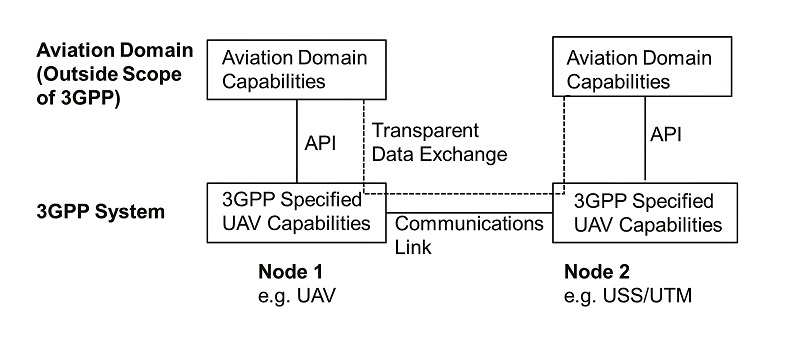
Release 17 provides three modes to support USS tracking of UAVs. There is a UAV location reporting mode that obtains the current location of a specific UAV, and a UAV presence monitoring mode that obtains information about a specific UAV going into or out of a particular area. This can then generate a list of UAVs in a geographic area as the third mode.
The first release for the next-generation 5G Advanced specification is Release 18, which is set to be frozen by the end of this year, for release in 2024. Some of its study items are based on new requirements, while others are a result of unfulfilled Release 17 requirements that require further work.
Release 18 includes a study on Architecture Enhancements for Vehicle Mounted Relays (TR 23.700-05) that aims to support the operation of base station relays that could be mounted on vehicles, using NR for wireless access to other vehicles and relaying data back to the core network.
Release 18 also continues the work in Release 17 for machine learning (ML) training and inference to improve the performance of 5G links. This aims to provide intelligent transmission support for application ML-based services to support the use cases for application-layer ML operation.
Some examples of 5G technology suppliers
CHINA
| Huawei/HiSilicon | +86 75 5287 80808 | www.hisilicon.com |
| Skydrone | – | www.skydrone.aero |
| ZTE | +86 55 2677 0000 | www.zte.com.cn |
ISRAEL
| Autotalks | +972 9 886 5300 | www.auto-talks.com |
JAPAN
| Rakuten Symphony | +81 5055 816 910 | www.symphony.rakuten.com |
NETHERLANDS
| NXP | +31 24 353 9111 | www.nxp.com |
SWEDEN
| Ericsson | +46 10 719 00 00 | www.ericsson.com |
UK
| Blu Wireless Technology | +44 1179 114011 | www.bluwireless.co.uk |
| CGI | +44 8450 707765 | www.cgi.com |
| Lime Microsystems | +44 1483 685063 | www.limemicro.com |
| Plextek RFI | +44 1799 533200 | www.plextekrfi.com |
USA
| Airspan Networks | +1 561 893 8670 | www.airspan.com |
| Skyworks | +1 781 376 3000 | www.skyworks.com |
| Qualcomm | +1 858 587 1121 | www.qualcomm.com |
| Verizon | +1 800 837 4966 | www.verizon.com |
UPCOMING EVENTS


